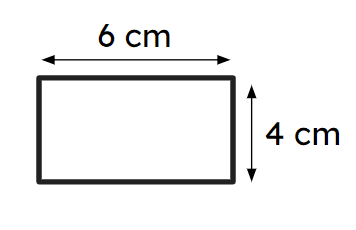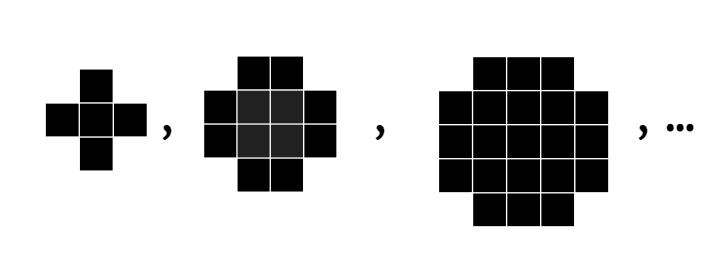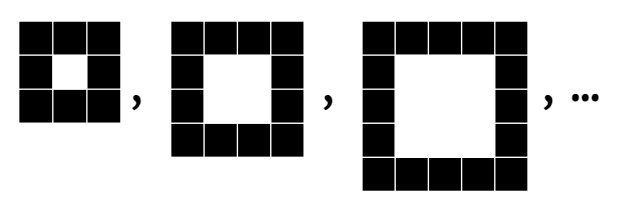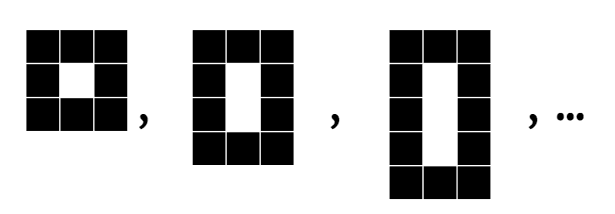Myths about teaching can hold you back


- Year 8
Arithmetic sequences
I can appreciate the features of an arithmetic sequence and be able to recognise one.


- Year 8
Arithmetic sequences
I can appreciate the features of an arithmetic sequence and be able to recognise one.
These resources will be removed by end of Summer Term 2025.
Switch to our new teaching resources now - designed by teachers and leading subject experts, and tested in classrooms.
These resources were created for remote use during the pandemic and are not designed for classroom teaching.
Lesson details
Key learning points
- Finding the difference between each term can help you identify different types of sequence.
- Sequences with a constant difference are arithmetic sequences.
- Arithmetic sequences can be uniquely described with an initial term and a common difference.
- It is possible to identify which sequences are arithmetic.
Keywords
Arithmetic sequence - An arithmetic (or linear) sequence is a sequence where the difference between successive terms is a constant.
Common misconception
Sequences such as triangular numbers which have a linear sequence in their differences are linear.
Terms in an arithmetic sequence have to have a common first difference.
To help you plan your year 8 maths lesson on: Arithmetic sequences, download all teaching resources for free and adapt to suit your pupils' needs...
To help you plan your year 8 maths lesson on: Arithmetic sequences, download all teaching resources for free and adapt to suit your pupils' needs.
The starter quiz will activate and check your pupils' prior knowledge, with versions available both with and without answers in PDF format.
We use learning cycles to break down learning into key concepts or ideas linked to the learning outcome. Each learning cycle features explanations with checks for understanding and practice tasks with feedback. All of this is found in our slide decks, ready for you to download and edit. The practice tasks are also available as printable worksheets and some lessons have additional materials with extra material you might need for teaching the lesson.
The assessment exit quiz will test your pupils' understanding of the key learning points.
Our video is a tool for planning, showing how other teachers might teach the lesson, offering helpful tips, modelled explanations and inspiration for your own delivery in the classroom. Plus, you can set it as homework or revision for pupils and keep their learning on track by sharing an online pupil version of this lesson.
Explore more key stage 3 maths lessons from the Sequences unit, dive into the full secondary maths curriculum, or learn more about lesson planning.

Licence
Prior knowledge starter quiz
6 Questions
Q1.Which sequences have a constant additive pattern?
Q2.Which sequences have a constant multiplicative pattern?
Q3.Calculate the perimeter of this rectangle.

Q4.Which of these is the area of this rectangle?

Q5.What is the term-to-term rule for a sequence with a constant additive pattern which has first term = 23 and 4th term = 41.
Q6.What is the value of $${6\over 7} - 2{1\over2}$$
Assessment exit quiz
6 Questions
Q1.Match the keyword to its definition.
arithmetic sequence -
a sequence that increases or decreases by the same step
common difference -
the constant additive rule from one term to the next
initial term -
the first term in a sequence
successive terms -
terms that are next to each other in a sequence
Q2.Match the arithmetic sequences with their descriptions.
7, 5, 3, 1, ... -
initial term $$7$$ and common difference $$-2$$
7, 9, 11, 13, ... -
initial term $$7$$ and common difference $$2$$
-1.6, -1.3, -1, -0.7, ... -
initial term $$-1.6$$ and common difference $$0.3$$
-1.6, -1.9, -2.2, -2.5, ... -
initial term $$-1.6$$ and common difference $$-0.3$$
-2, 3, 8, 13, ... -
fifth term $$18$$ and common difference $$5$$
38, 33, 28, 23, ... -
ninth term $$-2$$ and common difference $$-5$$
Q3.Which of these sequences are arithmetic?
Q4.In which of these sequences do the number of shaded squares in each term form a linear sequence?





